The Beginning I was born in New Delhi after independence. I was fascinated with craft from my school days and later learned to spin and weave because of a program I initiated at the Bal Bhawan & National Children’s Museum; teaching children through the arts. My undergraduate degree was in Political Science from Lady Sri Ram College and then I studied at the School of Drama. I went back to Delhi University in 1971 for a second degree in Education. After graduating, I began writing on the lives and work of exceptional crafts people who were far ahead of the market demands of magazines and newspapers.
In 1981, based on these articles, I was commissioned by Martand Singh, then Director of the Calico Museum of Textiles, to write for the ‘Master Weavers’ publication for the first Visvakarma exhibition, which opened at the Royal College of Art, London1982. I interviewed one master from every technique – a block maker, tie-dyer, a brocade weaver from Benares, and presented their point of view.
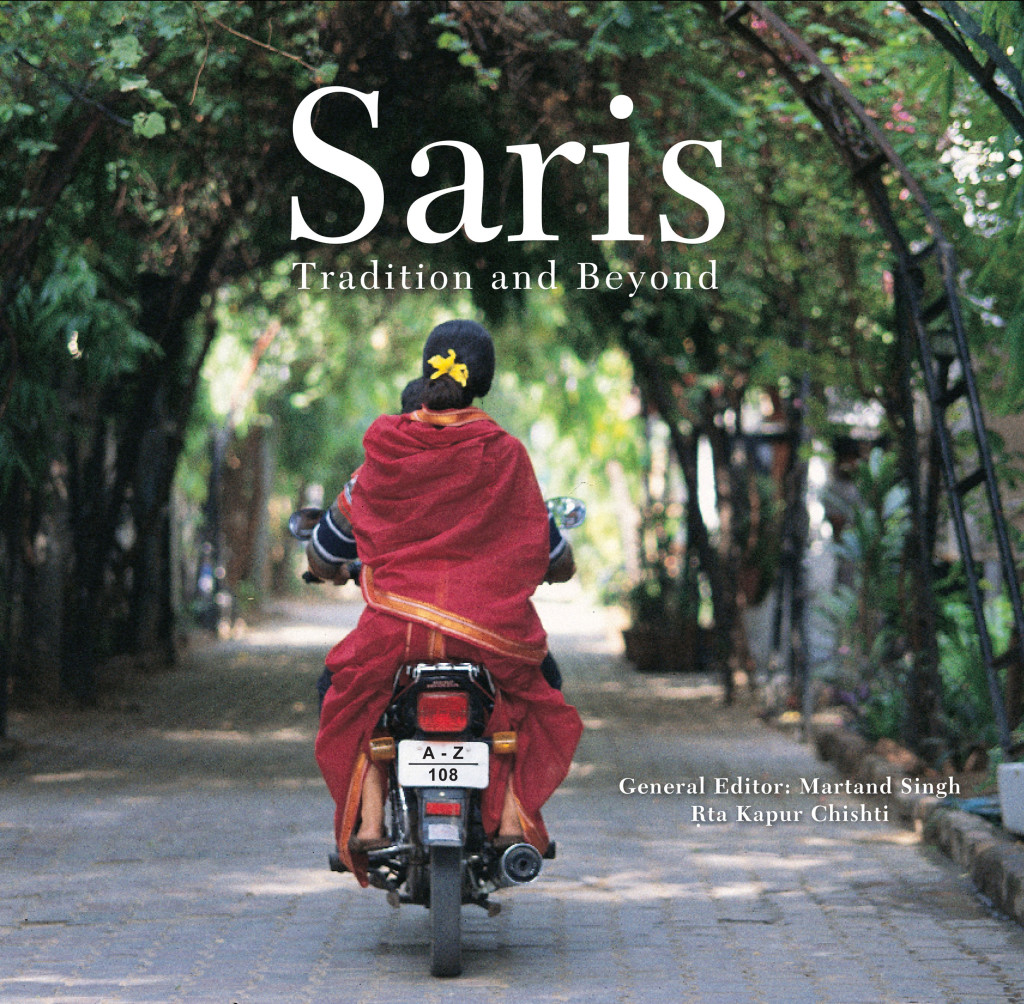 Above: Saris of India – Tradition & Beyond, book cover
Above: Saris of India – Tradition & Beyond, book cover
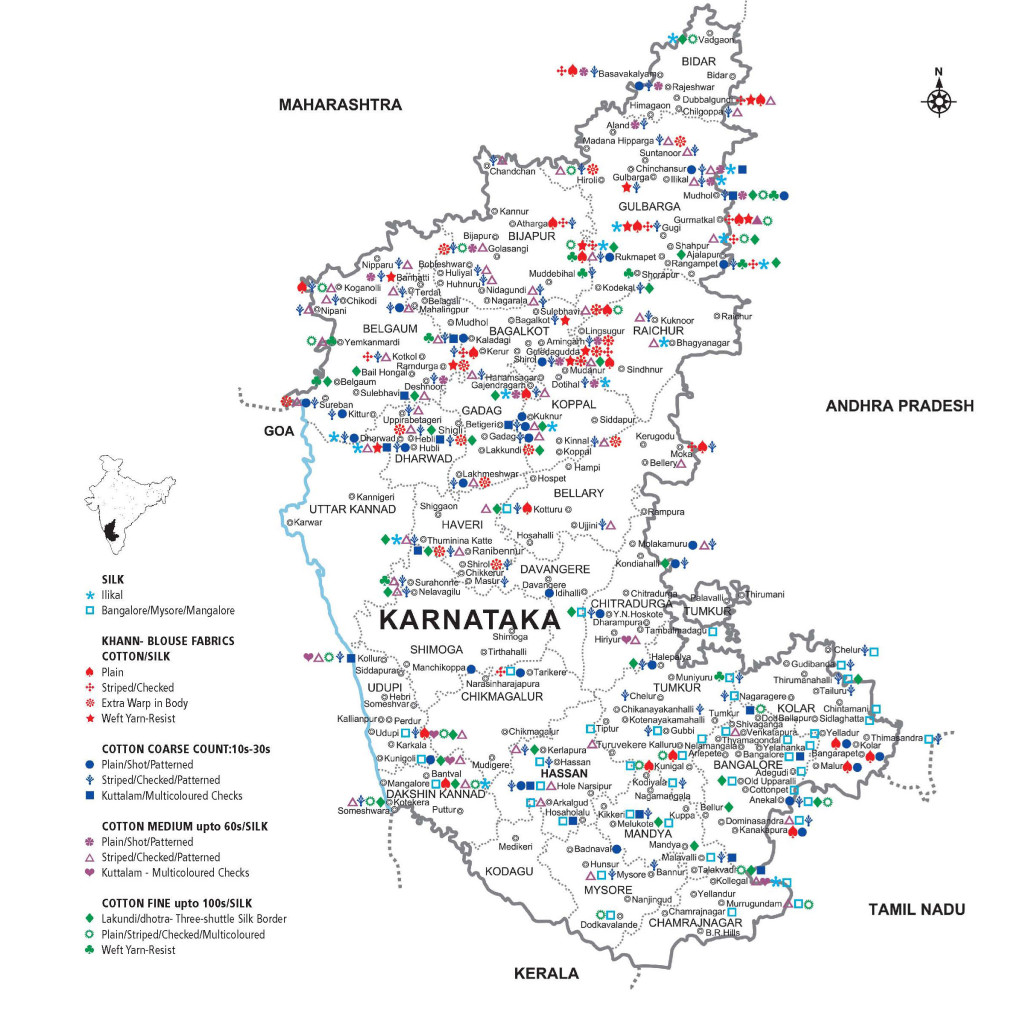 Above: Saris of India – Tradition & Beyond, documented weaving centers
Above: Saris of India – Tradition & Beyond, documented weaving centers
I then started research on a sari project titled ‘1001 saris of India’ as well as production with a Japanese designer in Rajasthan and Gujarat. The research was paid for very minimally – 3000 INR per month for about 15 years – and working with the Japanese designers enabled my research and travel. I couldn’t have survived without it. The articles were being written and published alongside; the Economic Times in Delhi had a big culture page at the time, The India Magazine, and then Times of India and Asian Age.
Taanbaan is a label we initiated in 2011 and has a Delhi-based design team that travels to the production areas once or twice a year to create a range of handspun-handwoven textiles in organic desi cotton or in combination with low twist silks: tussar; eri or muga. It tries to support the cultivation of raw materials by advance payment to farmers with a buy back guarantee for a specific quality.
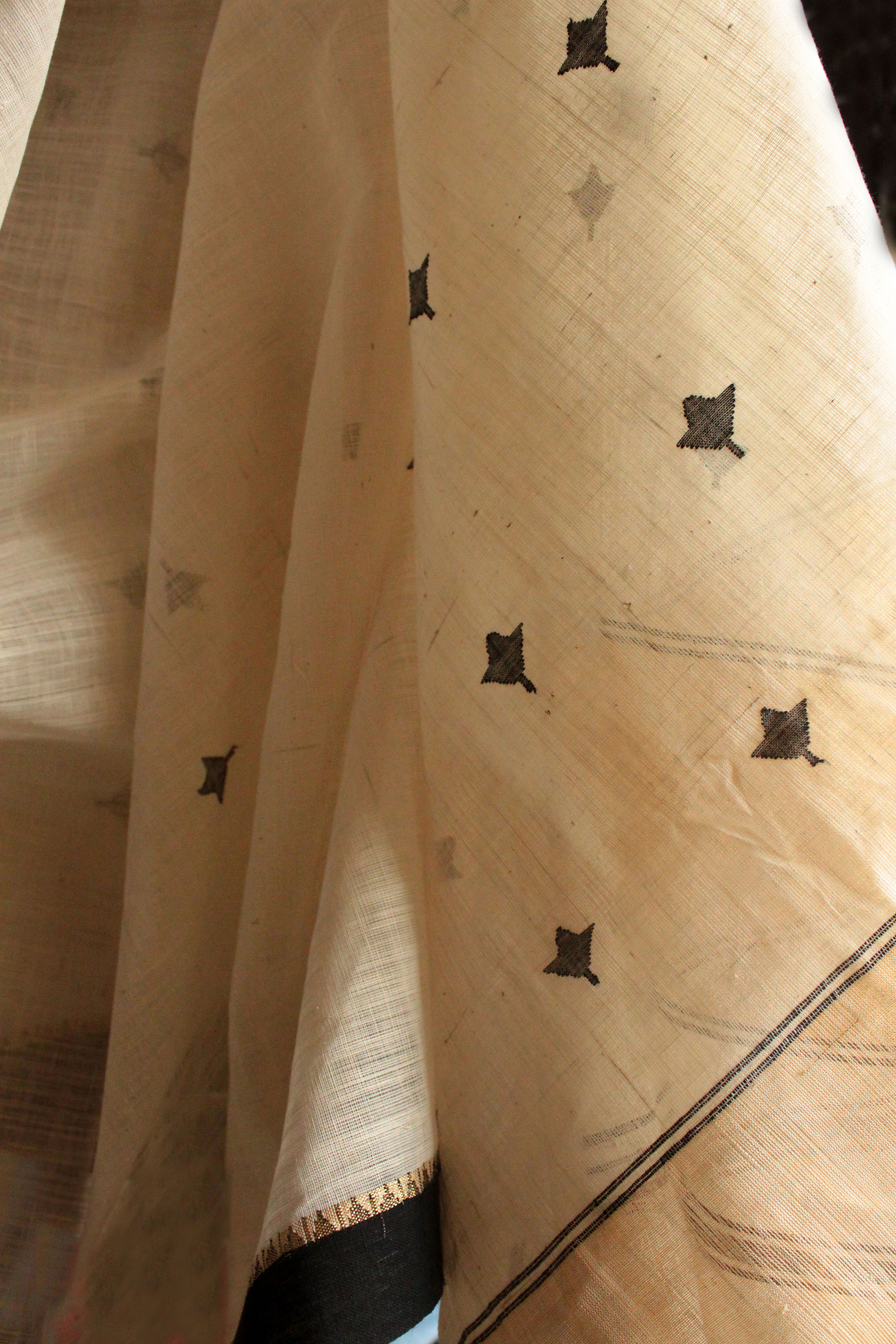 Above: Organic charkha hand spun jamdani sari, Taanbaan
Above: Organic charkha hand spun jamdani sari, Taanbaan
Though an initial grant may have supported the setting up of looms in some areas, they have all become self-supporting in 12 to 16 months. Every area has an appointed son/daughter of a weaver who coordinates the collection and quality of raw material, the understanding, supervision and implementation of design and weave required, ensures a finished quality that has been agreed upon and sees that it is delivered within a given time frame, and maintains a reimbursable monthly account out of which spinners and weavers are paid on a daily/weekly basis. We provide free-of-interest loans for essentials for a healthy working environment such as power backup inverters, loom accessories, medical emergencies, etc which are invariably paid back by the beneficiaries on a small monthly repayment basis.
Though the handspinning/handweaving program was initiated in 2006, it took five years for us to bring it to a point of stability with a Delhi-based design team, so that the participants could understand the quality and skill level that was expected of them. Also there was by then a regular flow of handspun handwovens of a certain quality that could be ensured and thus we could consistently create a market for it. Therefore, the need for a label.
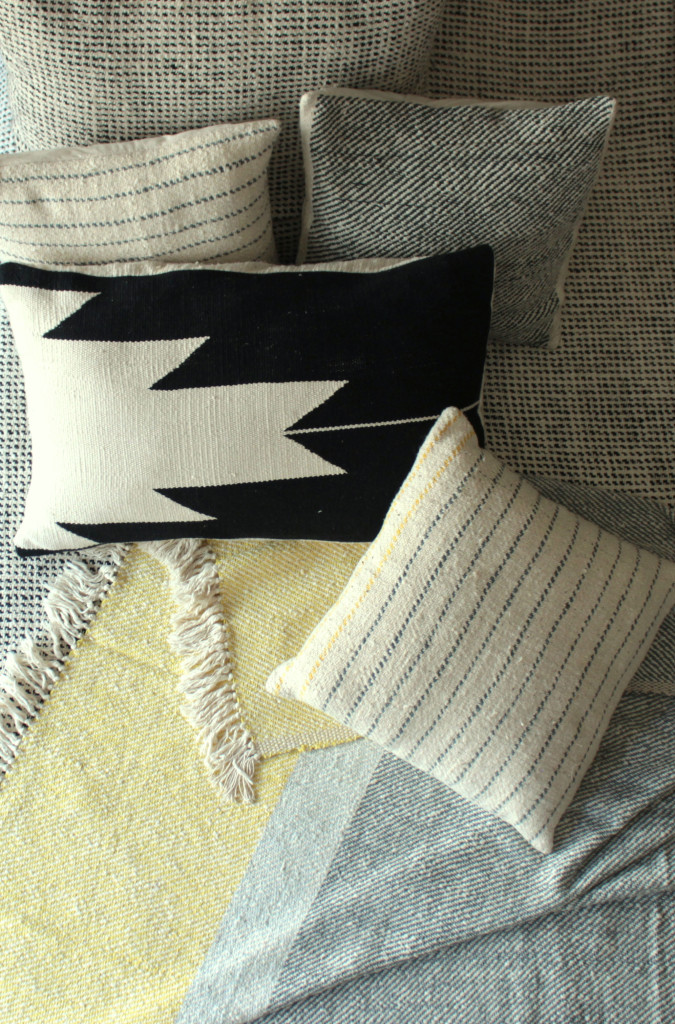 Above: Organic charkha hand spun home collection, Taanbaan
Above: Organic charkha hand spun home collection, Taanbaan
Moment It was a particularly hot day in Maharashtra. My colleagues and I had been through three villages, on the road since six in the morning for over 150 km, with three hour long discussions in each. We were foraging for information about what was woven previously, i.e. previous to the plain flimsy janta saris and fabrics we found them weaving at the time of our visit. The team was tired and ready for a stop at a village called Achalpur for some food and much looked forward to night’s rest. As we arrived, there was a slow start to the discussion, as we all sat on dhurries out in the open under the gracefully setting sun.
Suddenly, one elderly gentleman walked into the small group of fifteen weavers or so with a gudri (patch work) bed cloth to show a yarn resist Ikat border sari in one patch. Our fatigued group suddenly came to life: “What is this! We have not seen anything like this in all of Maharashtra till now. Are there more examples to see?” There was a flurry of activity among the women, children and elders! Everyone made a dash homewards, or to their neighbours’. Within minutes there were eight or ten more fragments before us.
This was astounding and we began digging for more of what was once woven. The crowd had now grown to more than 50 weavers and their families and many of them took my notebook to draw by hand what they wanted us to see from memory. While I was looking through my eyeglass at the density of the fragment and yarn counts, they were able to tell me the bundles of yarn that went into a warp of four saris. While I was counting threads, this mathematical genius was converting weight to length and width including extra threads used in warp and weft for patterning! What a wonder of a day! A day that made all the fallow hours and days worthwhile. Samples were commissioned late into the night, and arrived many months later without us leaving any advance payments. They were better than expected, woven more than forty years after they were last woven – and based on living memory!
We also run a program called ‘The Sari School’, teaching individuals the history and various methods of tying the sari.
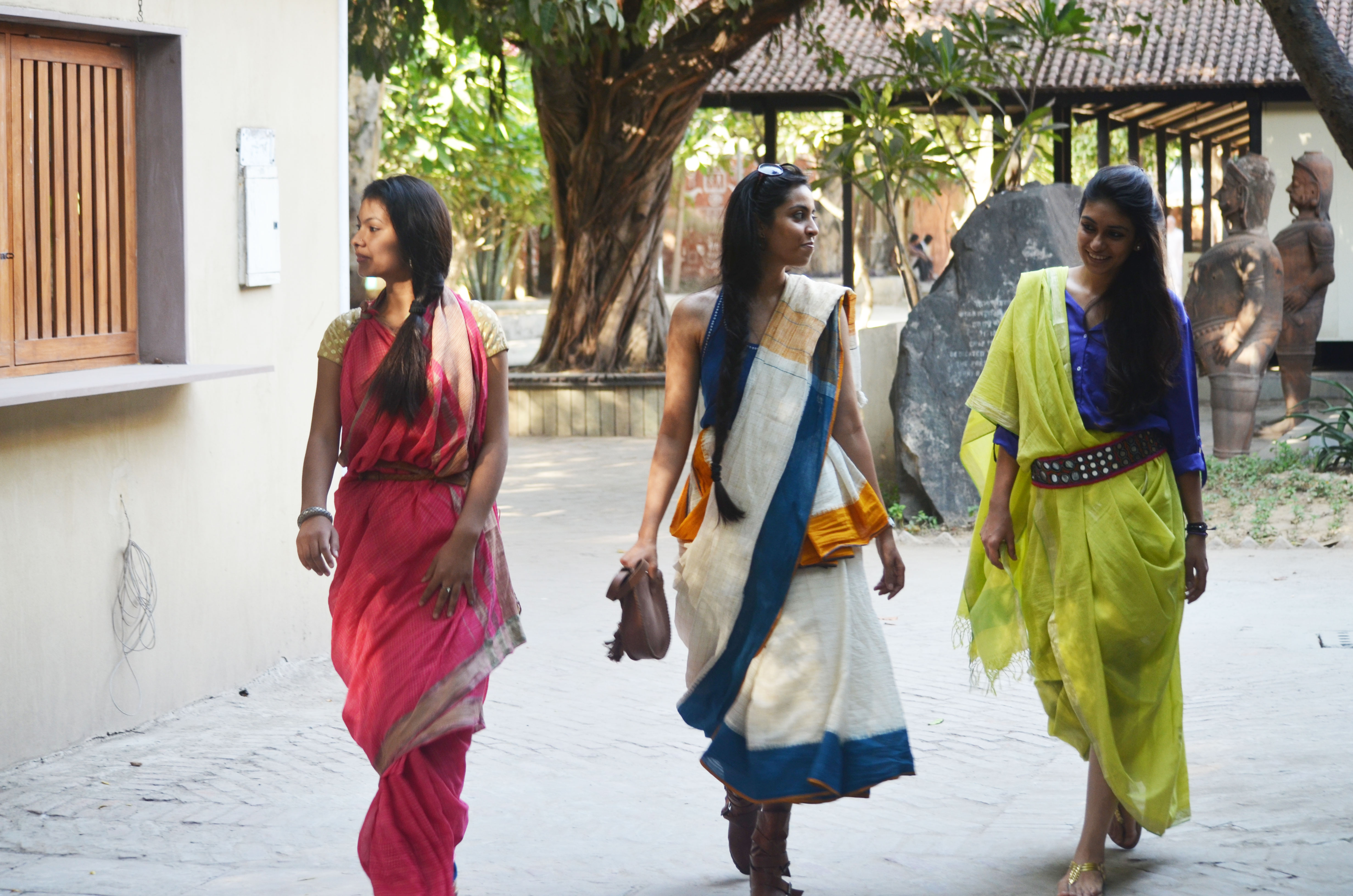 Above: The Sari School Workshop
Above: The Sari School Workshop
People Kamla Devi Chattopadhyaya who nurtured my interest in crafts people and textiles; Shanta Gandhi who shared her love for writing and the arts; Martand Singh – friend, aesthete, mentor.
References I usually browse through books but some websites about nature and birds like National Geographic and Discovery interest me. Indispensable books include Roop Samhita’s Indian Design: Figurative and Geometric, 5000 Indian Designs and Motives, as well as literature associated with Sant Kabir.
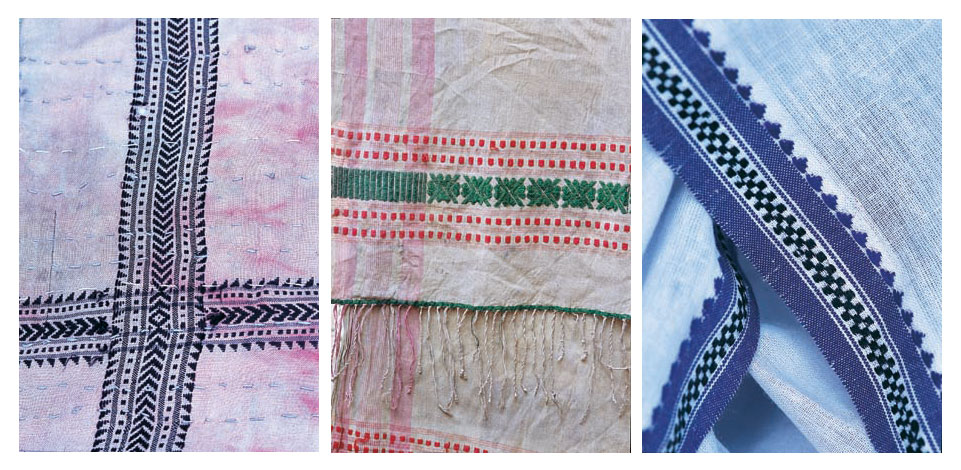 Above: Sari weaves from Uttar Pradesh from ‘Saris of India – Tradition & Beyond’
Above: Sari weaves from Uttar Pradesh from ‘Saris of India – Tradition & Beyond’
Work History Books Saris of India – Tradition and Beyond (1984 – 2010), Author Hand-crafted Indian Textiles: Tradition and Beyond, Roli Books, India (1998), Co-author Modern Indian Costume for the 18 volume Dictionary of Art by Macmillan publishers, U.K. (1994), Contributing author Exhibits Splendour of Indian Textiles, Beijing, China (1990), Curator and author of publication. Saris of India and Textile Developments, lecture tour presented at the Victoria and Albert museum, London, A.E.D.T.A Paris, Metropolitan Museum of Arts and Fashion Institute of Technology, New York, Los Angeles County Museum, LA, University of California, Davis and Azabu Museum of Arts, Tokyo (1992) World Shibori Symposium lecture and craft demonstration at Nagoya, Tokyo and Yamanashi, Japan (1994) Khadi-the Fabric of freedom, Curatorial co-ordinator New Delhi (2002) Organizing exhibitions of handspun/ hand-woven textiles along with workshops on request from sponsors including educational institutions, stores and corporate houses for their specific clientele (2010 – current) The Magic of the Unstitched Garment presentation at World Shibori Symposium, Hong Kong (2012) Organizations Dastkar, Member of the Governing body, 1990 – current National Institute of Fashion Technology (NIFT), New Delhi & National Institute of Design (NID), Ahmedabad (1990 – current) — Serving on various juries and expert committees on Textiles and Fashion Design Ananda Delhi Textile Developments Pvt Ltd, Founder (1998 – current) The Sari School, Founder, New Delhi, conducting workshops and classes (2003-ongoing) Films Scripted for textile films on Andhra Ikats and Kanchipuram brocades made for NFDC by Dev Bengal (1988) Scripted for ‘Roti, Kapda aur Architecture’ produced by School of Planning & Architecture (SPA), New Delhi (1991)

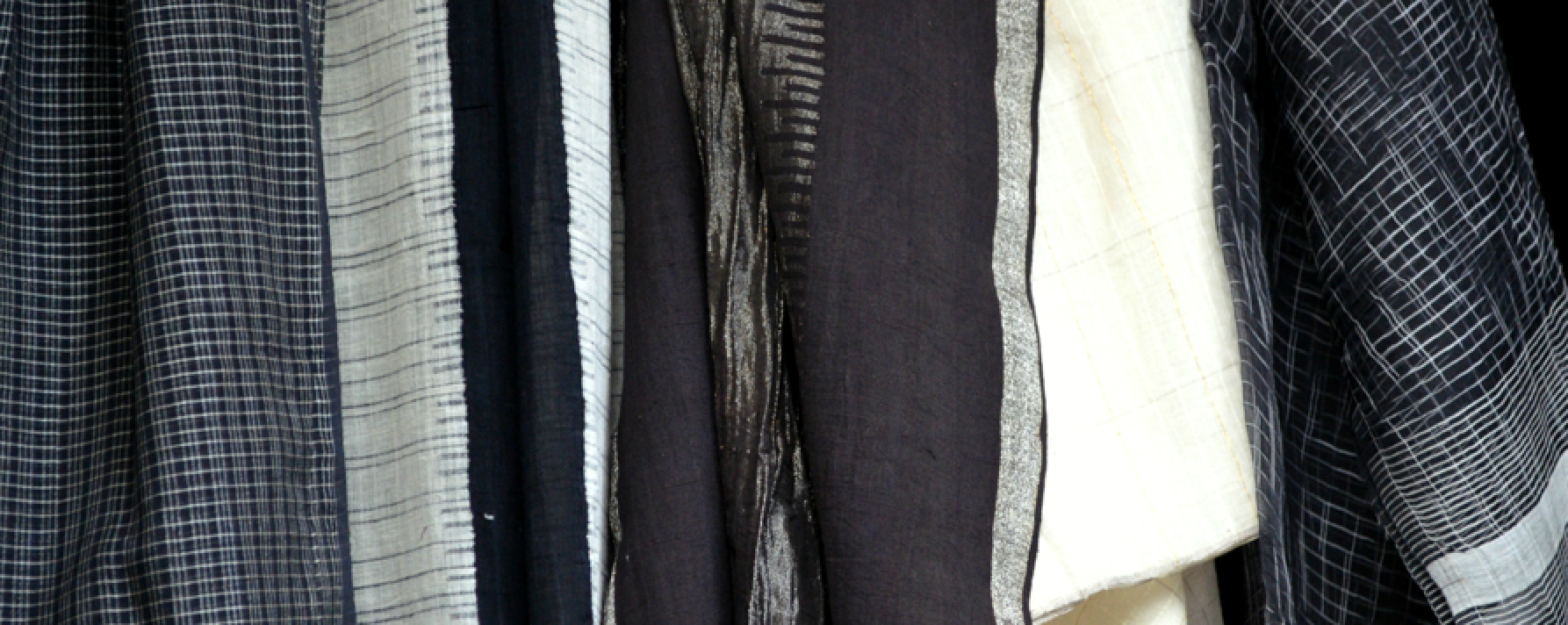

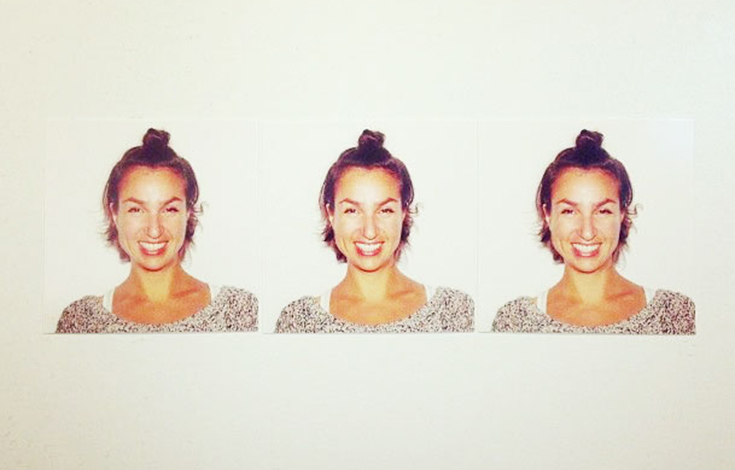

This is a very insightful article. Being a design enthusiast, it has served a great purpose of information combined with inspiration for me. Very well documented.
Intrigued!
A salute to a true artist and visionary. Rta kapur mam your work is so inspiring and very informative.
Hello,
You guys are doing great job. I wish to know more about types of weaves i.e. plain weave, satin weave, etc. with indian context and name. Will this book help me understand the topic.
Hello Ma’m,
I am a Delhi Based Fashion & Textile designer , passionate about Indian traditional weaves and textiles.I did My Masters in Textiles & Clothing from Lady Irwin College, Delhi University.
I seek an opportunity to meet you and associate with your Initiatives in any possible manner. Do let me know if its possible.
I would Love to attend one of your Sari Draping Workshops.
Dear mrs. Rta kapur chisti,dear mrs. renuka kelkar, dear mr. Martand singh
very recently i bought “sari, traditions and beyound” (german version) and i am so delighted and intrigued by that book. i want to thank you all for the work done to document one of the most interesting, charming and beautifull habiliments around the world. you made such an endeavour to collect all the textile patterns, the manners how to wear the sarees and provide an insight into lifes of the weavers and their families and how the industry changed throughout india. please receive my sincerest thanks – gerhard wührer
Really you have done very well for the craftspeople. Certainly the weaver from the different part of the country binifitted for your initiative.we are thankful to you.
Fascinating@ please can you help the weavers of Auraiin Dindori Distric. They are Panika/Panka tribal weavers who have for centuries woven various styles of LUGRA for Baiga Tribals. Baiga are hounoured locally as the 1st man of the soil, Masters of yhe soil, and lords over the animal kindom. They are dupposedly India’s national tribe. The Panika are spread over MP, CG, Jharkhand and Odisha, but most are really struggling for survival.
Finally I have met a group of people who are as eager to conserve the textiles found in Middle India as I am, and we are trying to ensure the weavers find themselves in win situation, along with those ‘helping’ them – if you get my meaning. They are such lovely people, and it breaks my heart to see them so helpless. I would be happy to introduce any sincere interest.
Best wishes,
Margie Watts-Carter
Kanha tiger Reserve & Durg
Dear Mrs Chishti,
I think we were in Lady Shree Ram College in the same years.
My name is rajini chandran d’Emilio,and I live in Milan,Italy.My son has a small business importing ‘Handmade’from India.We would like to introduce garments,and accessoriesmade from jamdani cotton sarees or fabric.
Please could you help me source these and indicate a few wholesale sources.
I would be very grateful,and sincerely hope this email gets to you,and you will have time to answer.
Thanking you,
Warm regards
Rajini